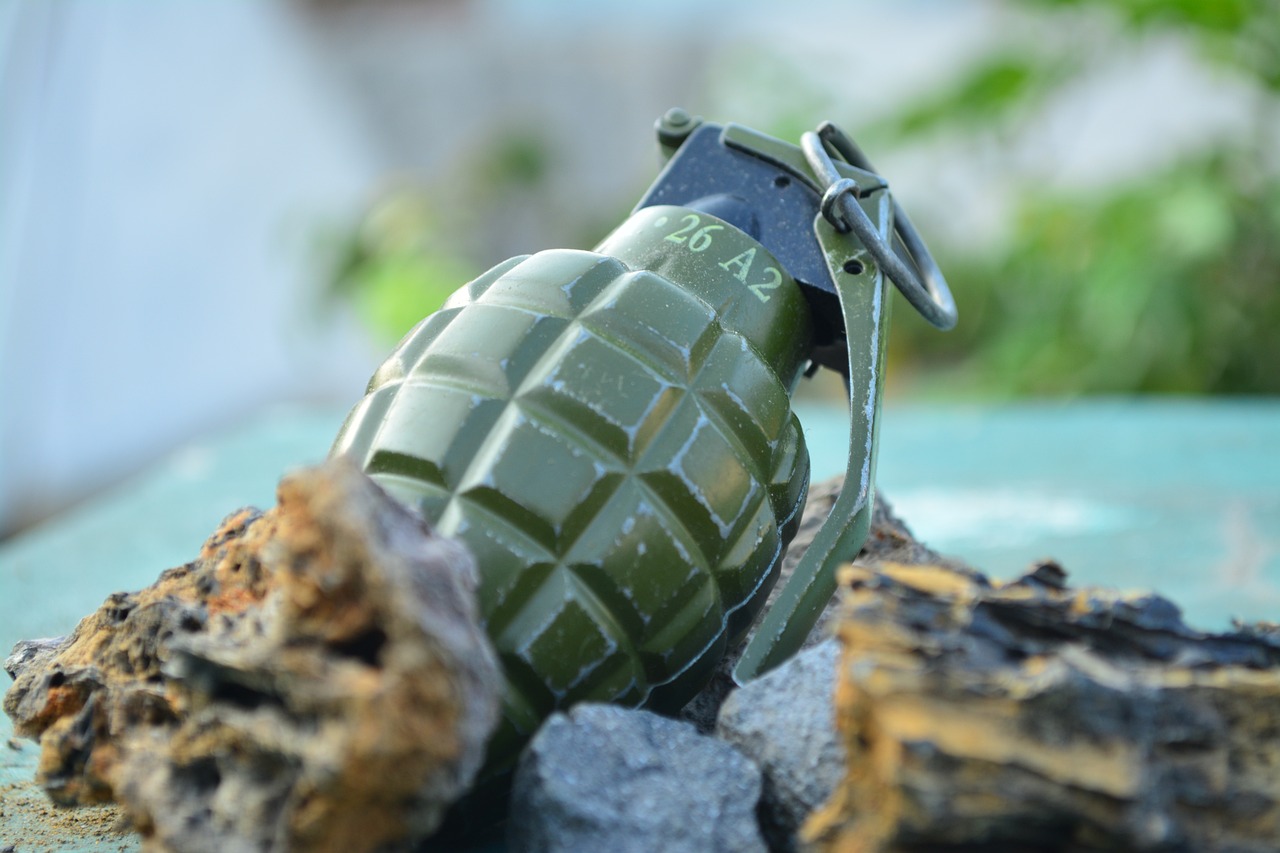Grenades played a crucial role in World War II, reshaping the dynamics of warfare for both the Allied and Axis forces. While grenades had been in use for a long time, their technology underwent significant advancements during this period, rendering them more effective and lethal.
Initially, grenades were simple handheld devices with essential components like friction fuses or rudimentary timers. However, as World War II progressed, many nations invested heavily in grenade research and development, resulting in a wide array of grenades designed for various purposes. These explosive devices proved invaluable for clearing enemy bunkers, trenches, and buildings during close-quarters combat. They were also deployed to suppress enemy forces, compelling them to seek cover and creating opportunities for soldiers to advance or employ flanking strategies.
Grenades held a pivotal role in both offensive and defensive strategies. On the defensive front, they played a critical role in halting enemy advancements, while on the offensive, they were instrumental in breaching enemy fortifications. Two pivotal moments in the war, the Battle of Stalingrad and the D-Day landings in Normandy, underscored the significance of grenades. They were instrumental in the success of these operations.
While grenades had been used in World War I, their design and prevalence substantially improved in World War II. Despite the risks posed to troops, proper training and handling protocols minimized these dangers.
The historical importance of grenades in World War II extended beyond their explosive capabilities; they fundamentally altered the strategies employed in the conflict. Evolving in terms of construction and usage by infantry, grenades played a decisive role in pivotal battles and campaigns. From the brutal urban warfare in Stalingrad to the beaches of Normandy, grenades left an indelible mark on the war’s history.
Soldiers utilized grenades to eliminate enemy bunkers, trenches, and buildings in close proximity. Precise throwing and timing were crucial in these situations, allowing infantry units to advance with reduced risks. Additionally, grenades neutralized enemy forces, forcing them into cover and creating opportunities for troop movements and flanking maneuvers.
Grenades were indispensable in defensive tactics as they impeded enemy advances and neutralized threats. Inoffensive maneuvers, troops hurled grenades into machine gun emplacements and caves, eliminating hazards and facilitating unit progress. The Battle of Stalingrad serves as a prominent example of how grenades revolutionized urban warfare, as German forces faced fierce resistance, and grenades became essential for clearing structures and strongholds.
During the D-Day landings in Normandy, Allied forces extensively used grenades to establish beachheads, ultimately leading to the liberation of Western Europe. Personal accounts from the soldiers who wielded grenades in the war vividly illustrate the extent of their impact on the lives of those who fought.
To truly understand the influence of grenades in World War II, it is essential to delve into the personal stories of the individuals who employed them. Beyond statistics and strategic plans, these stories reveal how grenades fundamentally altered the experiences of those who participated in the war. In this narrative, we explore moving personal accounts of soldiers who utilized grenades during World War II.
Sergeant John’s Heroic Sacrifice: Sergeant John Smith, an honored American soldier, found himself in a dire situation during the 1944 Battle of Bastogne. Surrounded by German forces, his platoon faced dwindling ammunition and the imminent threat of being overwhelmed. Displaying remarkable courage, Sergeant Smith seized a satchel of grenades and charged toward the enemy positions.
He hurled grenades into the German foxholes, sowing chaos among the enemy troops. Tragically, he succumbed to his injuries, but his selfless act bought invaluable time for his comrades to regroup and hold their ground. His actions saved numerous lives and stood as a testament to the valor exhibited by soldiers in the midst of war.
The Close-Quarters Combat of Private James: Private James Williams, a British infantryman, vividly recounted his experiences with grenades during the intense street battles in Caen. As his unit advanced through the city, they confronted well-entrenched German forces within buildings and narrow alleys.
Assigned the task of clearing an enemy-occupied house, Private Williams, armed with grenades, cautiously entered the building, well aware of the advantage it offered to defenders. With quick thinking and precise grenade throws, he systematically eliminated the enemy occupants, securing the structure for his unit.
Lieutenant Maria’s Innovative Tactics: Lieutenant Maria Rodriguez, a Spanish-American nurse who volunteered as a combat medic, offered a unique perspective on grenades. Though not commonly associated with medical personnel, she found inventive ways to utilize grenades for life-saving purposes.
During a fierce Pacific theater battle, Lieutenant Rodriguez employed smoke grenades to provide cover for wounded soldiers while she administered treatment. Her resourcefulness and courage in the face of danger showcased the versatility of grenades beyond their destructive capabilities.
Sergeant Michael’s Sniper Duel: Sergeant Michael O’Connor, a Canadian sniper, found himself engaged in a high-stakes duel with a German sniper during the Battle of Monte Cassino. Pinned down in a ruined building, he leveraged grenades not only as offensive weapons but also as psychological tools.
He strategically lobbed grenades in different directions, creating confusion and compelling the enemy sniper to constantly change positions. This disruption hindered the sniper’s accuracy, ultimately affording Sergeant O’Connor the opportunity to eliminate his adversary and secure the advantageous position.
In conclusion, grenades in World War II transcended their status as mere explosives; they fundamentally transformed the way the war was waged. Their evolution in design and application had a profound impact on the outcomes of pivotal battles and campaigns. These personal stories underscore how the effects of World War II extended beyond the battlefield, leaving an enduring mark on the lives of those who witnessed the formidable power of grenades.

